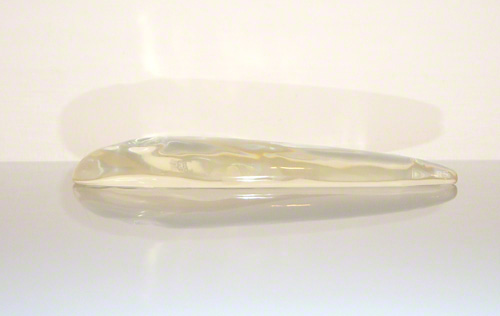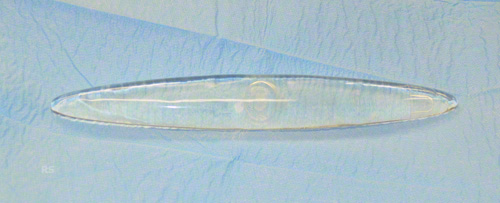We’d like to inform you about surgical calf correction (calf enlargement) at the Yuveo Clinic in Düsseldorf.
Among other things, we will answer your questions about the different types of calf implants and the reasons why you should have your calves treated at the Yuveo Clinic.
Calves that are too small are sometimes inherited and can be enlarged by calf implants.
Dr. Rene Schumann and Dr. Daphnie Schumann-Averkiou
Content
Yuveo Klinik
Characteristics of calf implants
Anatomic or cigar shaped calf implants are used for calf augmentation.
Anatomic implants
Cigar shaped implants
Liquid or cohesive silicone gel?
Expanders
Calf implants are made of ...
Breast augmentation using breast implants has become a common procedure for plastic surgeons.
There are, however, far fewer requests for calf augmentation (see also calf surgery) using calf implants. However, advances in breast implant technology have also improved the quality of calf implants.
As with breast implants, solid silicone, not liquid silicone, is now the standard material for calf implants. The term cohesive silicone gel is often used.
The stability of the outer shell has increased significantly; the chance of the implant breaking is small, even in the event of severe contusions and impacts.
Calf implants can easily withstand the burden placed on the calves. Calf implants do not have textured surfaces, as the implant is placed in the gastrocnemius muscle’s compartment, where capsular fibrosis (hardening of the implant capsule) is extremely rare.
In addition, the implant has to be pushed through a very small incision (4cm) to a depth of 30 cm. A textured surface would make this task next to impossible.
We should mention that the calf implants described here are the most common implants and consist of a hard shell filled with silicone gel. There are, however, also solid (firm, rubber like) implants which are described further on.


FAQ: Calf implants
What types of calf implants are there?
There are two commonly used basic shapes, as seen in the images on this page:
Anatomic calf implants:
They are larger on one side, and therefore emphasize the upper third of the calf. They are usually used by men to emphasize the musculature of the upper calf. Patients who suffer from calf hypotrophy after being operated on for club foot as a child can also benefit from this shape.
Cigar shaped calf implants:
These are thinner than anatomic calf implants and are used in particular to shape women’s calves. Depending on the diagnosis and the size of the implant, these implants can also be used to correct the middle and lower sections of the calf.
Is silicone safe?
Silicone is used in medicine for drains, implants (not just breast implants) and to maintain medical equipment.
In the past, silicone has been suspected of increasing the risk of breast cancer, rheumatic diseases, or autoimmune diseases. This led, in the USA, to large scale studies which were able to refute these claims.
Silicone has become one of the best studied materials in medicine. It is considered a safe material to use. You can find the most important studies on the subject at the end of the page.
What about solid individually-adjustable calf implants?
In addition to the calf implants filled with silicone gel described above, there are also implants which are solid – made from firm silicone.
These implants can be shaped as desired, which is particularly advantageous for treatment of calf deformation after injuries or operations. The relevant company manufactures the calf implant using a plaster impression, creating a very accurate approximation of the required shape.
What are the Advantages and Disadvantages of Solid and Silicone Gel Filled Implants?
Advantages of the Standard Implants:
- Economical
- Less effort to manufacture
- They are soft, and can often barely be felt.
- No plaster impression required
Advantages of Solid Calf Implants:
- Individually shaped
- Can be cut to fit even during the operation.
Disadvantages of the Standard Implants:
- Pre-manufactured shapes only
- Shaping during the operation is not possible
Disadvantages of Solid Calf Implants:
- Very firm; can therefore often be felt
- Significantly more expensive
- More effort to manufacture
- Plaster impression required
What are calf expanders?
Calf expanders are also calf implants, however they are used only very rarely.
Expanders are silicone shells which can be filled via a valve. The expander is implanted in a position on the calf which the patient wishes to have filled out.
The valve, which is connected to the expander via a small silicone tube, is placed under the skin in an easy to reach location. At this point, saline solution is poured into the expander via the valve over the course of a few weeks – this gradually fills up the chamber and the calf implant swells.
The tissue is stretched by the expansion, creating a cavity which will serve as space for the final calf implant. The tissue must be stretched over a period of approx. 6 weeks in order to create a lasting effect. The amount of solution and the speed at which the chamber is filled depends on the tissue, the amount of stretching required, and the amount of pain experienced by the patient.
When does it make sense to use an expander?
For patients with extremely small calves, for example after injury or burns, and for patients who have had calf hypotrophy from childhood.
In these cases there is simply not enough tissue; even implanting mid-sized calf implants can cause problems during the operation due to the extremely small amount of space available.
Checking the facts
Silicone implants are useful to enlarge calves. There are different types of them which we select according to your wishes and the indications.
Further information
Studies concerning silicone implants
The largest studies on silicone implants deal with breast implants. Here we introduce a few studies which are relevant for calf implants in spite of this, as calf implants are also made of silicone.
- June 1999; National Academy Institute of Medicine; Conclusion: connective tissue diseases, cancer, neurological diseases and other systematic complaints are encountered no more frequently in women with silicone breast implants then in women without silicone implants.
- 1998; Sturrock R.D., FRCP, Independent Review Group (IRG); Conclusion: There is no connection between silicone implants and connective tissue diseases …
- 1998; European Committee on Quality Assurance and Medical Devices in Plastic Surgery; Conclusion: Autoimmune and connective tissue diseases are not connected to breast implants. Furthermore, the study notes that current studies refute any malignant degeneration caused by silicone breast implants.
